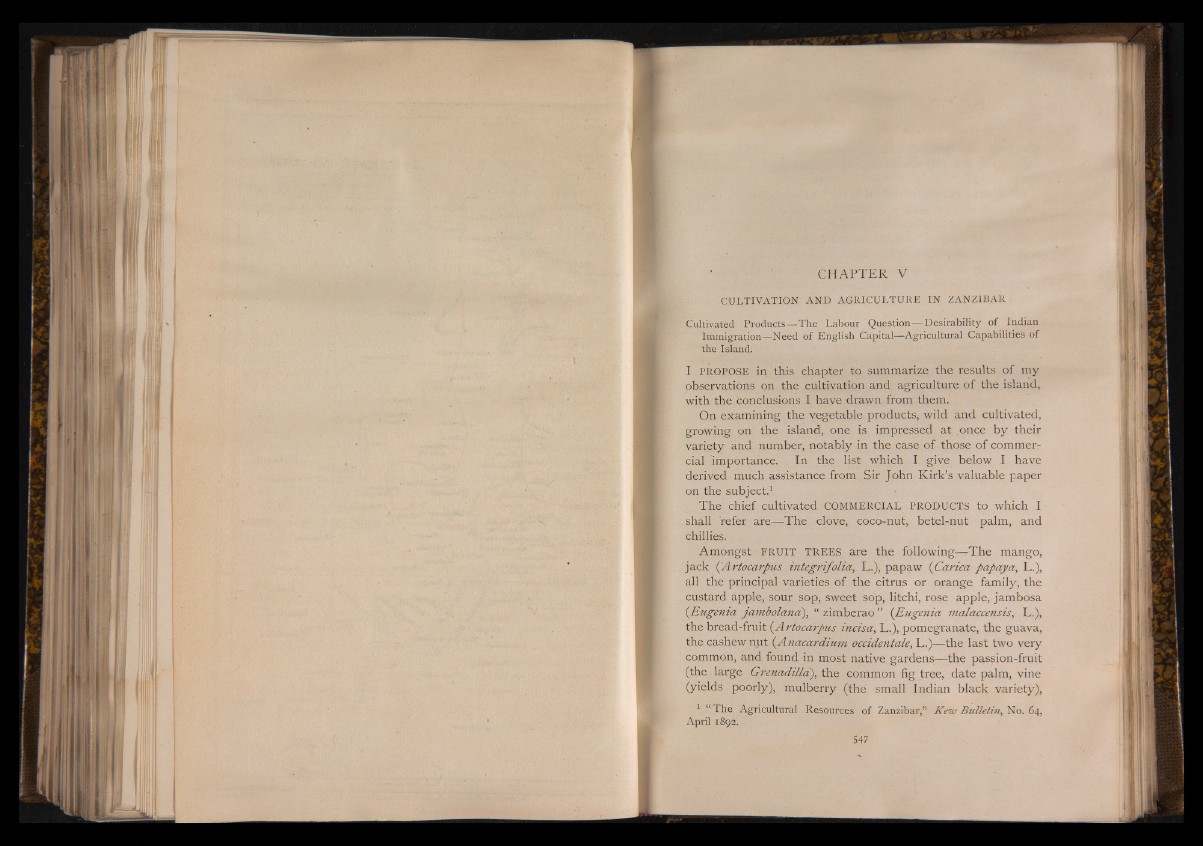
■ . r ■ ,
,
V
CH APTER V
CULTIVATION AND AGRICULTURE IN ZANZIBAR
Cultivated Products— The Labour Question— Desirability of Indian
Immigration— Need of English Capital—Agricultural Capabilities of
the Island.
I PROPOSE in th is c h a p te r to. sum m a r iz e th e r e su lt s o f m y
o b s e r v a t io n s on th e c u lt iv a t io n a n d a g r ic u ltu r e o f th e is la n d ,
w ith th e c o n c lu s io n s I h a v e d r aw n from th em .
On examining the vegetable products, wild and cultivated,
growing on the island, one is impressed at .once by their
variety and number, notably in the case of those of commercial
importance. In the list which I give below I have
derived much assistance from Sir John Kirk’s valuable paper
on the subject.1
The chief cultivated COMMERCIAL PRODUCTS to which I
shall refer are— The clove, coco-nut, betel-nut palm, and
chillies.
Amongst FRUIT TREES are the following— The mango,
jack ÇArtocarpus integrifolia, L.), papaw (Carica papaya, L.),
all the principal varieties of the citrus or orange family, the
custard apple, sour sop, sweet sop, litchi, rose apple, jambosa
ÇEugenia jambolana), “ zimberao ” (Eugenia malacce?isis, L.),
the bread-fruit (A rtocarpus incisa, L.), pomegranate, the guava,
the cashew nut (Anacardium occidentale, L.)— the last two very
common, and found in most native gardens— the passion-fruit
(the large Grenadilld), the common fig tree, date palm, vine
(yields poorly), mulberry (the small Indian black variety),
1 “ The Agricultural Resources of Zanzibar,” Kew Bulletin, No. 64,
April 1892.